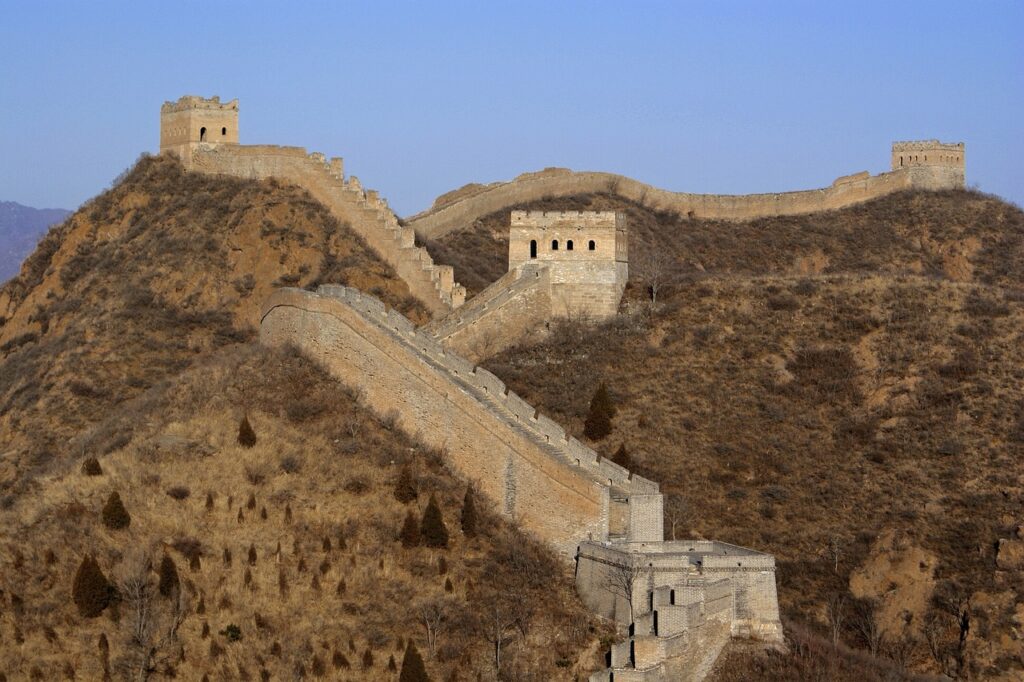CHAPTER 6
Introduction to the Chinese Civilization
The Chinese civilization is one of the oldest and most influential civilizations in world history. It began over 4,000 years ago along the banks of the Yellow River and Yangtze River. Ancient China made remarkable contributions in various fields, including agriculture, trade, art, science, and governance. The Chinese developed a unique writing system, built the Great Wall for protection, and introduced inventions like paper, gunpowder, and the compass. Confucianism, Taoism, and Buddhism shaped their way of life, emphasizing respect, wisdom, and harmony. This civilization thrived for centuries, leaving behind a rich cultural and historical legacy that continues to influence the world today.
Answer the following questions:
Question 1: How was China isolated and protected from the rest of the world?
Ans: China was naturally isolated due to geographical barriers. The Himalayas and the Tibetan Plateau in the southwest, the Gobi and Taklamakan Deserts in the north and west, and the Pacific Ocean in the east protected it from invasions and external influences. These natural features limited foreign interaction, allowing China to develop a distinct culture and civilization.
Question 2: Name the rivers that gave rise to the ancient Chinese civilization. Why was one of them known as the “Sorrow of China”?
Ans: The two main rivers that gave rise to ancient Chinese civilization were the Yellow River (Huang He) and the Yangtze River (Chang Jiang). The Yellow River was called the “Sorrow of China” because of its frequent and devastating floods, which destroyed villages, caused loss of life, and led to hardships for the people.
Question 3: What were the important occupations of the ancient Chinese? Mention two important facts regarding each of these occupations.
Ans:
- Farming
- Ancient Chinese farmers grew rice, millet, and wheat, which were staple foods.
- They developed advanced irrigation techniques, such as canals and dikes, to control water supply.
- Silk Production (Sericulture)
- The Chinese discovered the process of making silk from silkworm cocoons and kept it a secret for centuries.
- Silk became a valuable trade commodity, leading to the establishment of the Silk Road.
- Bronze and Iron Working
- Ancient Chinese craftsmen created weapons, tools, and ceremonial objects using bronze and iron.
- They developed advanced metallurgy techniques that influenced warfare and agriculture.
- Trade and Commerce
- China engaged in extensive trade along the Silk Road, exchanging goods like silk, tea, and porcelain.
- Chinese merchants used copper coins and later paper money, one of the earliest forms of currency.
Question 4: Give a brief account of the following:
- Chinese Society
Ancient Chinese society was hierarchical. The emperor was at the top, followed by nobles, scholars, and officials. Farmers, artisans, and merchants formed the lower classes. Confucianism influenced social order, emphasizing respect for elders, family loyalty, and education. - Tea Cultivation
Tea cultivation in China began over 4,000 years ago. The Chinese developed special farming techniques for growing tea plants, primarily in southern China. Tea became a cultural symbol and was later exported to other parts of the world. - Sericulture
Sericulture, or silk production, was a highly guarded secret in ancient China. The process involved raising silkworms, feeding them mulberry leaves, and carefully harvesting silk threads from their cocoons. Silk was a major export, making China famous for its luxurious fabric.
Read the essay Essay on My Vision for India 2047
Read the Question and Answer on The Chinese Civilization
Question 5: What are the main features of the Chinese script?
Ans:
- The Chinese script is logographic, meaning each character represents a word or idea rather than a sound.
- It has thousands of characters, with each one having a specific meaning.
- The script is written in vertical or horizontal rows.
- Calligraphy is an important art form in Chinese culture.
- The script has remained largely unchanged for centuries, making ancient texts still readable today.
Question 6: Why were the majority of people in ancient China illiterate?
Ans:
- The Chinese script was complex, requiring years of study to master.
- Education was mostly available to the nobility and scholars, while farmers and laborers focused on survival.
- Books and learning materials were expensive, limiting access to education.
- The Confucian system emphasized scholars and officials over commoners, restricting literacy to the elite.
Question 7: Describe the Great Wall of China. Why was it built?
Ans:
The Great Wall of China is a massive defensive structure stretching over 13,000 miles. It was built primarily by the Qin Dynasty and later expanded by the Ming Dynasty. The wall is made of stone, brick, tamped earth, and wood. It includes watchtowers and fortifications.
Purpose:
- To protect China from invasions by northern nomadic tribes like the Mongols and Xiongnu.
- To serve as a military defense system, allowing soldiers to patrol and communicate using signals.
- To regulate trade and immigration along China’s borders.
Question 8: Mention four important Chinese inventions that transformed the history of the world.
Ans:
- Paper – Invented during the Han Dynasty, paper revolutionized writing and record-keeping.
- Printing (Woodblock and Movable Type) – Allowed mass production of books, spreading knowledge and literacy.
- Gunpowder – Led to the development of fireworks, cannons, and modern weaponry.
- Compass – Used for navigation, greatly aiding sea exploration and trade.

